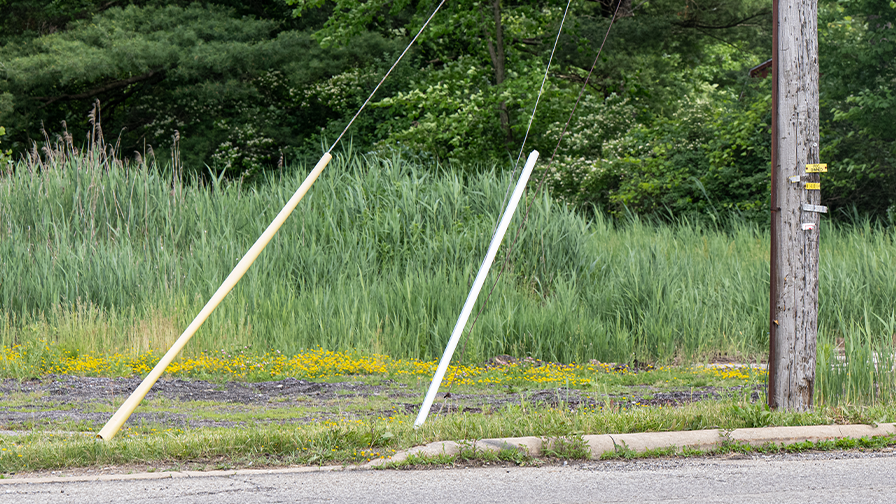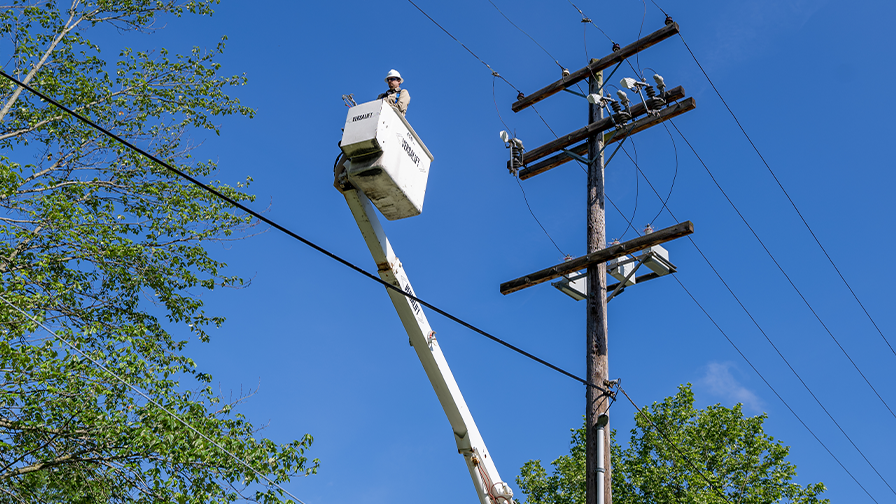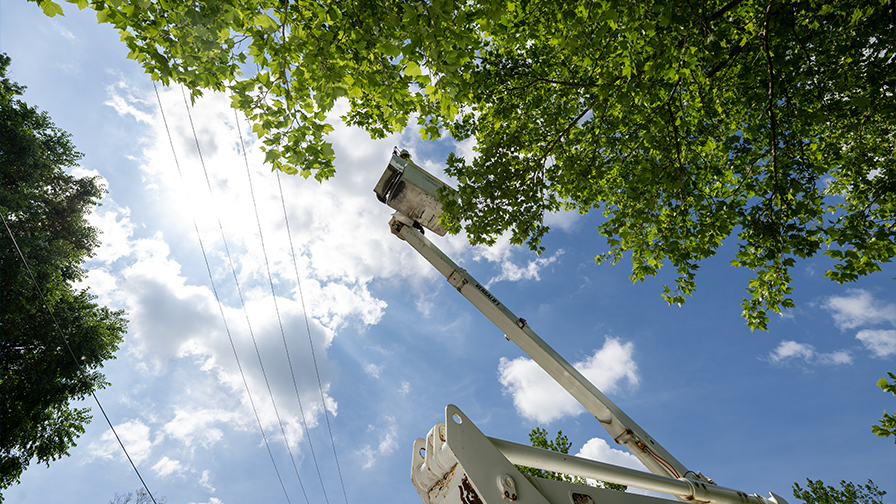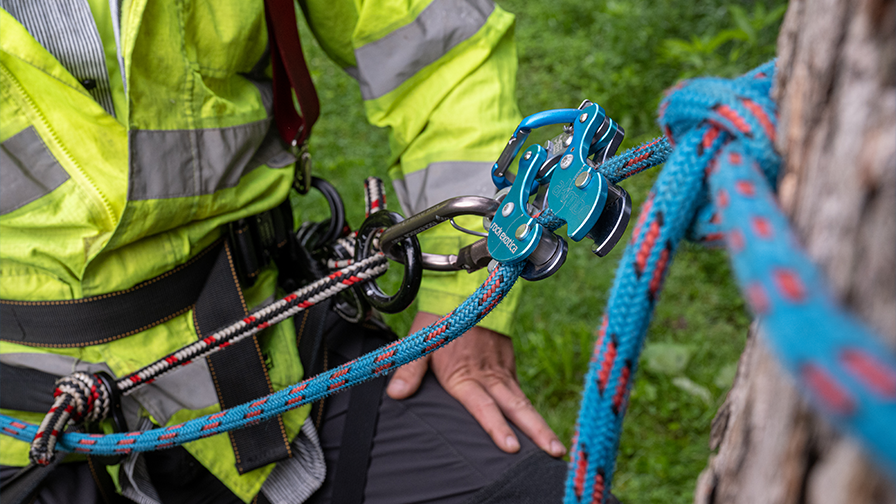Five-Minute Meeting: Telephone and Communication Lines
Five-Minute Meeting: Telephone and Communication Lines
 Five-Minute Meeting: Telephone and Communication Lines
Five-Minute Meeting: Telephone and Communication Lines
All overhead phone lines, including communication wires, must be considered energized with potentially fatal voltages and treated with respect and distance.
While visiting a crew, a worker was observed touching the communication wires several times.
It was a situation many in the industry have experienced. The primary wires and open secondary wires were above the tree, but the communication wires were resting directly on the tree and branches.
The person in the tree was working very hard to do an excellent job. They knew they were being observed and focused on doing everything correctly. When the worker grabbed the communication wires, it became clear that the issue was due to a lack of training, not a matter of disobedience.
As qualified line clearance arborists and qualified line clearance arborist trainees, we refer to Section 4.3 of the American National Standards Institute (ANSI) Z133 for guidance on minimum approach distances (MAD) and other safety regulations. However, we often overlook the very first line item in Section 4.3:
4.3.1 The items contained in Section 4.1, General, shall always be included in the review of this section.
If we look back at Section 4.1, we find Subsection 4.1.2:
4.1.2 The employer shall train each employee that all overhead and underground electrical conductors, guy wires, pole grounds, and communication wires and cables shall be considered energized with potentially fatal voltages.
Nothing written in Section 4.3 alters or contradicts this statement. The message is clear: Do not touch any of the wires or cables coming from or going between poles, regardless of what type of wires they are. To do so is an ANSI violation, but more importantly, risking your life.
Returning to Section 4.3, the ANSI Z133-201 Table 3 Minimum Approach Distance Chart is used every day in the arboriculture industry. Most people have come to associate this table with transmission, subtransmission, distribution, primary, and secondary wires of all types. However, Table 3 lists only voltages, not wire types.
The very first entry in Table 3 states:
|
Voltage Range |
0-5,000 ft. | 5,000-10,000 ft. | 10,000-14,000 ft. |
| 0.050 to 0.300 | Avoid contact | Avoid contact |
Avoid contact |
According to W.D. Reeve, in the Subscriber Loop Signaling and Transmission Handbook-Analog (1992, p.138, p.39), the nominal system voltage of telephone wires is 52.1 volts (V) DC; with range extenders in use, a voltage can be as high as 100V to 130V DC. Additionally, to ring the telephone, the central office superimposes a 20-hertz (Hz) AC signal at a nominal voltage of 105V over the DC voltage present on the idle line.
When phone lines are wrapped with small diameter wire to secure them to a steel “messenger wire,” an electronic hook switch (EHS) cable supports the heavy phone line. Even if the voltage is not coming from the insulated communication wires, there is a possibility that a shock can be received from the guy wire span and wire wrap.
Five-Minute Meeting: Working Overhang
When conducting pruning operations, even for small branches, the best practice is to remove branches in a “total branch control” manner using ropes or by reducing the size of the branch you are cutting into a much smaller piece.
Remember, we only see a small portion of the electrical circuit. If a short is occurring a mile down the road, it could be conducting electricity through the communication wires and back to a job site. That means that based on voltage, and Section 4.1.2, phone lines shall be treated with the same respect and distance as 120V/140V secondary wires.
Related Articles

Five-Minute Meeting: Working Around Secondary Wires and Low Voltage Lines Though the American National Standards Institute (ANSI) Z133 allows us to “avoid contact” with secondary lines or those under 750 volts, we need to exercise caution around these lines because they carry lethal voltage. Secondaries have lower voltage than primaries. We can distinguish them by[...]
Read More
Five-Minute Meeting: Working Overhang When conducting pruning operations, even for small branches, the best practice is to remove branches in a “total branch control” manner using ropes or by reducing the size of the branch you are cutting into a much smaller piece. In a weekly kick-off safety meeting, a utility noted a situation that[...]
Read More
Aerial lifts cannot touch energized lines and arborists must be aware of minimum approach distance (MAD). Learn more.
Read More
Wear, tear, and other damage to equipment can present safety hazards in the field. Equipment maintenance can prevent these safety hazards from arising and is essential for continued safe work with that equipment.
Read MoreSUBSCRIBE
Subscribe to our mailing list to receive updates.
Categories
Recent Posts
- How-To: Learning Knot Basics 02th Aug 2018
- How-To: Tying a Stopper knot 07th Aug 2018
- How-To: Selecting the Right Safety Vest 21th Aug 2018
- How-To: Tying a Slip Knot 04th Sep 2018
- How-To: Inspecting Your Snaps 18th Sep 2018
Training the Next Generation
All our classes are built on industry safety practices. Ready to start learning?